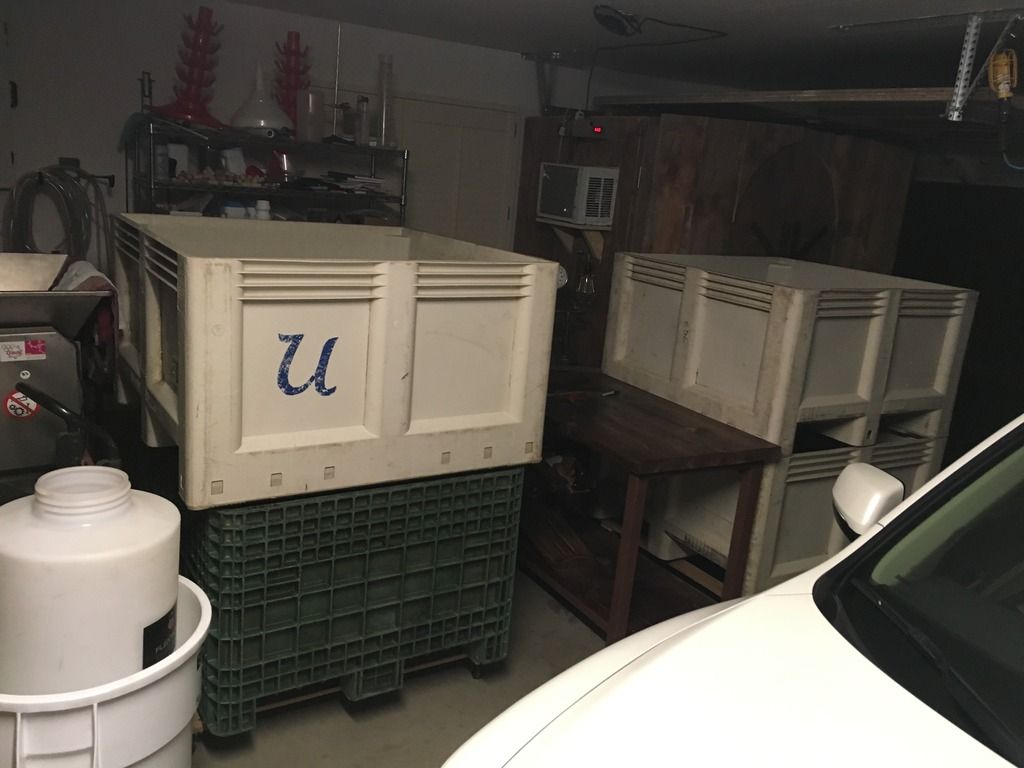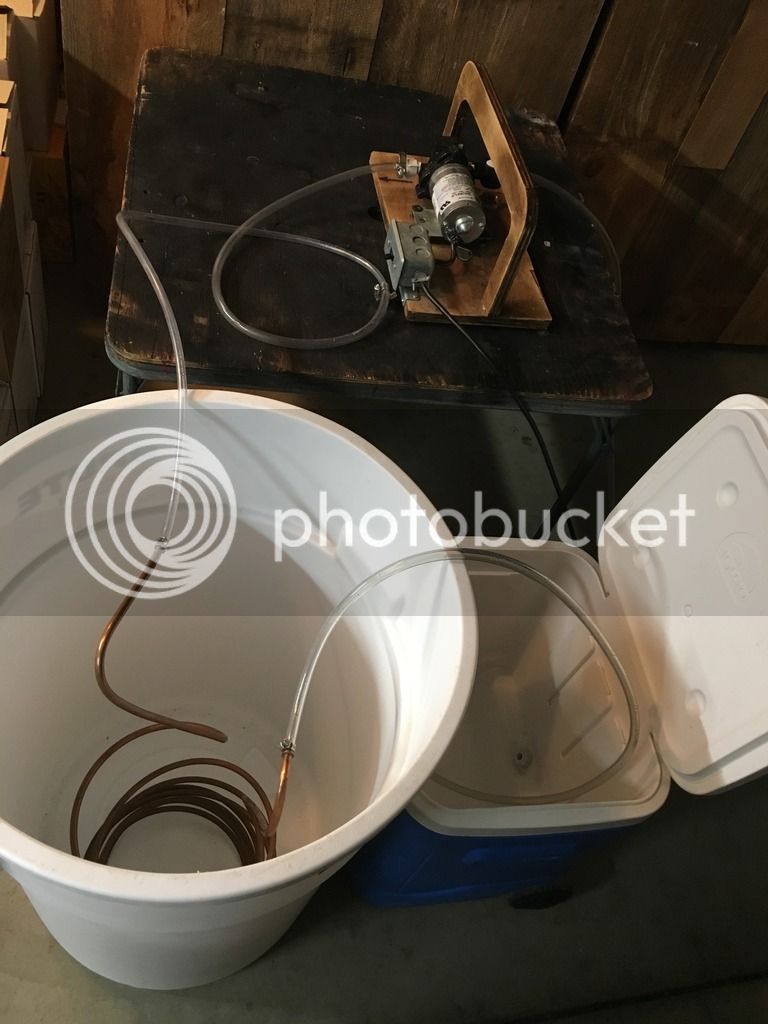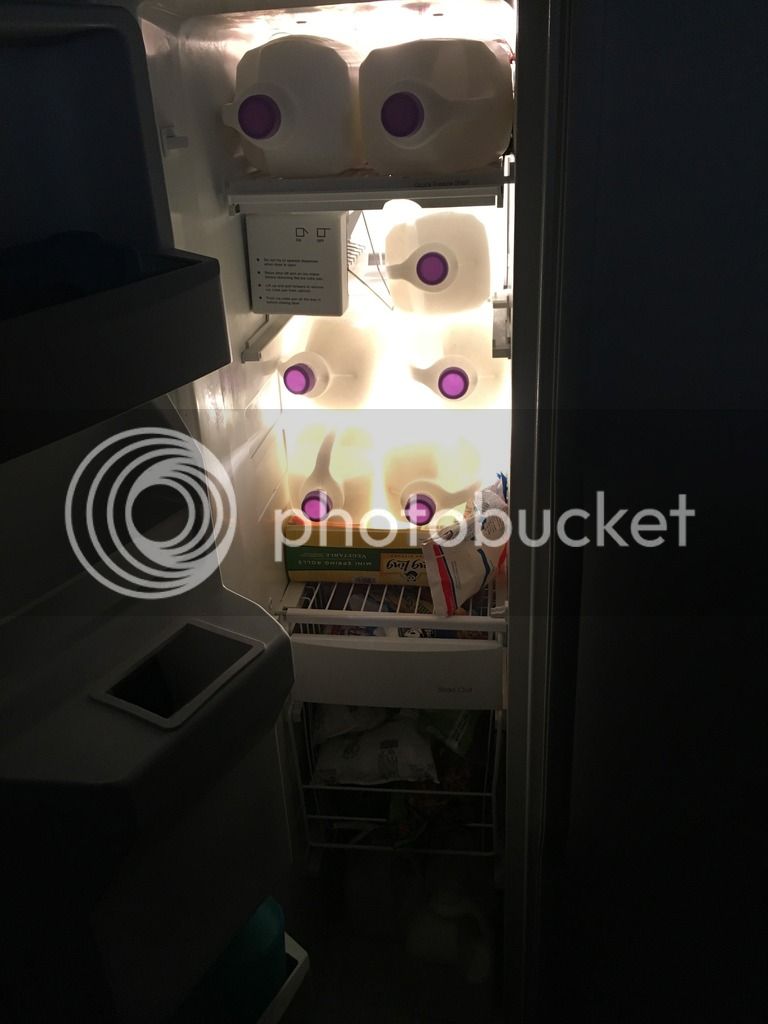You are using an out of date browser. It may not display this or other websites correctly.
You should upgrade or use an alternative browser.
You should upgrade or use an alternative browser.
Critical look at each other's wine
- Thread starter NorCal
- Start date

Help Support Winemaking Talk - Winemaking Forum:
This site may earn a commission from merchant affiliate
links, including eBay, Amazon, and others.
- Joined
- Oct 23, 2014
- Messages
- 4,312
- Reaction score
- 5,819
All you purest sweeten yovurr finds wines to semi sweet to sweet and send me some,
Just a classless no pallet hillbilly
Dawg
Just a classless no pallet hillbilly
Dawg
NorCal
Senior Member
I am convinced that the H2S we experience is from the temperature of our ferments. We are fighting 100 degree days, in a closed garage with an open ferment. We throw ice jugs at it and the occasional dry ice, but still it is hard to contain a bin of 1000 lbs of grapes and hungry yeast. Runaway peak temps in the 90's is not uncommon. So, a problem we need to solve.


Last edited:
I am convinced that the H2S we experience is from the temperature of our ferments. We are fighting 100 degree days, in a closed garage with an open ferment. We throw ice jugs at it and the occasional dry ice, but still it is hard to contain a bin of 1000 lbs of grapes and hungry yeast. Runaway peak temps in the 90's is not uncommon. So, a problem we need to solve.

With the money we already have invested in winemaking, most of us are not looking for ways to spend more, but maybe you could find a used window unit to put in temporarily while you have your ferments going on, for a week or so.
Even with better air temps in the garage, I suspect that due to the large size of your fermentation batches, you'll probably still need some dry ice or frozen milk jugs to keep the temps down. When I do 30 gallon brute ferments, the temps get into the upper 80's at their peak with 75F ambient temps in the fermentation area........

$6.99 ($0.35 / Count)
Red Supply Solution Wine Grape 20 Seeds - Vitis Vinifera, Organic Fresh Seeds Non GMO, Indoor/Outdoor Seed Planting for Home Garden
ORGINBUD LLC

$14.80
$24.00
The Geography of Wine: How Landscapes, Cultures, Terroir, and the Weather Make a Good Drop
Amazon.com

$213.50 ($213.50 / Count)
Wine Ingredient Kit - En Primeur Winery Series - South African Sauvignon Blanc
Bridgeview Beer and Wine Supply

$74.99 ($74.99 / Count)
Delirious Trembles Belgian Golden Strong Ale, Beer Making Extract Kit
Boomchugalug

$129.00 ($129.00 / Count)
Cru International - Washington Merlot Style Wine Ingredient Kit
Home Brew Ohio

$169.50 ($169.50 / Count)
Wine Ingredient Kit - CRU SELECT Australia Style Chardonnay
Bridgeview Beer and Wine Supply
That's quite the dilemma. Is there any way to build a temporary "cold room"? I'm picturing plywood with the foam insulation sheets and a window A/C unit. I've seen people use similar construction on a much smaller scale for fermentation chambers using mini-fridge condenser units. I agree with John that it would probably still need ice jugs to keep the center of the mass cooled, but it would have to help, especially to try to knock down those peak temps.
It would cost a little more up front, but I imagine the electricity savings would more than make up for that in the longer run versus trying to cool the entire garage. If you can free up a corner somewhere, especially along insulated walls, you could even get by with using about half the material. Just thinking out loud.
It would cost a little more up front, but I imagine the electricity savings would more than make up for that in the longer run versus trying to cool the entire garage. If you can free up a corner somewhere, especially along insulated walls, you could even get by with using about half the material. Just thinking out loud.
4score
Member
- Joined
- Apr 25, 2013
- Messages
- 501
- Reaction score
- 513
Good ideas. @NorCal and I are looking at a home-made cooling approach. First we need to prototype the idea before we buy materials.
We'll still use Andante yeast, but we still need to address the high temps. Dry ice is expensive and I worry that it damages some of the yeast population with such a shock to temps.
We'll still use Andante yeast, but we still need to address the high temps. Dry ice is expensive and I worry that it damages some of the yeast population with such a shock to temps.
This is a good example of the small scale version I was referring to.
- Joined
- Feb 9, 2010
- Messages
- 10,078
- Reaction score
- 5,983
Thanks for the well thought thread. I have a slight H2S on my Sangiovese this year. So far I've splash racked, but some is still there. I'm going to try the reduless next.
Check their web site. They were giving away free samples.
I have a 5 gallon test run aging now. The bulk of this batch used rc212. Can't wait to see the results.
How about a DIY Glycol system?
For the fermentation bin:
https://morewinemaking.com/products/weldless-wine-cooling-plate-kit-225-475.html
or homemade Stainless steel 304 and bend yourself:
https://www.amazon.com/Stainless-Steel-Seamless-Tubing-Length/dp/B004XN89EO
Glycol pump:
https://www.amazon.com/EFMCO-BRASS-PUMP-GLYCOL/dp/B00NWWD1EU
then some tubing to connect to the copper tubing drilled through the side wall of a cheap Chest Freezer:
http://www.webstaurantstore.com/avantco-cf5-5-3-cu-ft-commercial-chest-freezer/178CF5.html
Transfer that heat into the Freezer set at maximum!
TXWineDuo
For the fermentation bin:
https://morewinemaking.com/products/weldless-wine-cooling-plate-kit-225-475.html
or homemade Stainless steel 304 and bend yourself:
https://www.amazon.com/Stainless-Steel-Seamless-Tubing-Length/dp/B004XN89EO
Glycol pump:
https://www.amazon.com/EFMCO-BRASS-PUMP-GLYCOL/dp/B00NWWD1EU
then some tubing to connect to the copper tubing drilled through the side wall of a cheap Chest Freezer:
http://www.webstaurantstore.com/avantco-cf5-5-3-cu-ft-commercial-chest-freezer/178CF5.html
Transfer that heat into the Freezer set at maximum!

TXWineDuo
Last edited by a moderator:
NorCal
Senior Member
Ok, I wasn't going to let the cat out of the bag yet, but you have made suggestions on the path that I am heading down, which is to run cold water through a stainless steel coil in the macro bin. Sure, I could buy a glycol unit and a pre-made cooling plate, but not willing to spend that kind of $$. In fact, before I spend $80-$100 on 100 feet of SS coil and material to space it out, I want to proto-type the set-up to see how effective it will be.
I calculated the surface area of the SS coil vs. volume of must in the macro bin, and kept that same ratio in the beer purging coil I have versus the volume of water I will put into the Brute.
I'll fill the brute up with 25 gallons of 90 degree water, grab a big bag of ice and see how effective it is on pulling the heat out, as well as see how long the ice lasts. I will measure temp of the water in the Brute and the ice chest every minute or two. It won't be a perfect experiment, but the only cost is a bag of ice and I might learn something.
The plan would be to fill a medium size electric chest freezer with ice and water and pump in/out of it through the coil to cool the must in the macro bin.

I calculated the surface area of the SS coil vs. volume of must in the macro bin, and kept that same ratio in the beer purging coil I have versus the volume of water I will put into the Brute.
I'll fill the brute up with 25 gallons of 90 degree water, grab a big bag of ice and see how effective it is on pulling the heat out, as well as see how long the ice lasts. I will measure temp of the water in the Brute and the ice chest every minute or two. It won't be a perfect experiment, but the only cost is a bag of ice and I might learn something.
The plan would be to fill a medium size electric chest freezer with ice and water and pump in/out of it through the coil to cool the must in the macro bin.

Last edited:
Looking forward to the results you find, we take 4 ice bottles and put in each of our water tubs that the brutes sit in. As pic shows we recycle old juice bottles.
So when you do get the stainless steel wort chiller, can you hook it to the copper tubing and try to freeze some water around the copper and put in more chilled water in the igloo and test. Making a double heat exchanger.
Good luck
TXWineDuo

So when you do get the stainless steel wort chiller, can you hook it to the copper tubing and try to freeze some water around the copper and put in more chilled water in the igloo and test. Making a double heat exchanger.
Good luck
TXWineDuo

NorCal
Senior Member
stickman
Veteran Winemaker
- Joined
- Jun 16, 2014
- Messages
- 1,930
- Reaction score
- 2,248
@NorCal, you've seen my setup, I've been doing this type of cooling for several years. It will take about 15lbs of ice to drop the 25gal of water by 10F, and based on the size of your coil I'm just guessing it will take about a half hour. The cooling will be faster if the circulating water flow rate is high enough to keep the ice water mixed.
With your size batch, you might consider an automatic pump-over, just have the pump periodically circulate the wine through the cooling coil and over the top of the cap. The only down side would be waking up in the morning to find something went wrong and the entire batch was pumped to the floor.
With my system, the jacket holds about 6 gallons of water, so I have the pump kick on only long enough to replace the cold water in the jacket. It sits until the jacket warms up before replacing the water again. With my small 60gal tank it only needs to do this a few times a day.
With your size batch, you might consider an automatic pump-over, just have the pump periodically circulate the wine through the cooling coil and over the top of the cap. The only down side would be waking up in the morning to find something went wrong and the entire batch was pumped to the floor.
With my system, the jacket holds about 6 gallons of water, so I have the pump kick on only long enough to replace the cold water in the jacket. It sits until the jacket warms up before replacing the water again. With my small 60gal tank it only needs to do this a few times a day.
Reminds me of my wort chiller for beer making. With a slow trickle of water I can bring 5.5 gallons of 212*F wort to 60*F in 20 minutes with the water temperature around 42*F. Of course I'm not recirculating it but dumping it on my garden, since I can buy 1000 gallons of water for $1. You obviously can't do that with water being pretty scarce in your neck of the woods.Ok, I wasn't going to let the cat out of the bag yet, but you have made suggestions on the path that I am heading down, which is to run cold water through a stainless steel coil in the macro bin. Sure, I could buy a glycol unit and a pre-made cooling plate, but not willing to spend that kind of $$. In fact, before I spend $80-$100 on 100 feet of SS coil and material to space it out, I want to proto-type the set-up to see how effective it will be.
I calculated the surface area of the SS coil vs. volume of must in the macro bin, and kept that same ratio in the beer purging coil I have versus the volume of water I will put into the Brute.
I'll fill the brute up with 25 gallons of 90 degree water, grab a big bag of ice and see how effective it is on pulling the heat out, as well as see how long the ice lasts. I will measure temp of the water in the Brute and the ice chest every minute or two. It won't be a perfect experiment, but the only cost is a bag of ice and I might learn something.
The plan would be to fill a medium size electric chest freezer with ice and water and pump in/out of it through the coil to cool the must in the macro bin.
I guess I could make it a closed loop and have a second coil in an icy water bucket, then use the warmed water in the bucket to water my garden, might be considered a little bit more of an environmentally responsible method.
I do like how you are trying to solve your problem, keeps the mind young and healthy so you can enjoy more wine.
NorCal
Senior Member
NorCal
Senior Member
It was a 20 lb bag of ice I emptied into the cooler with 3 gallons of water.
Similar threads
- Replies
- 25
- Views
- 2K
- Replies
- 17
- Views
- 2K
- Replies
- 1
- Views
- 2K
















































